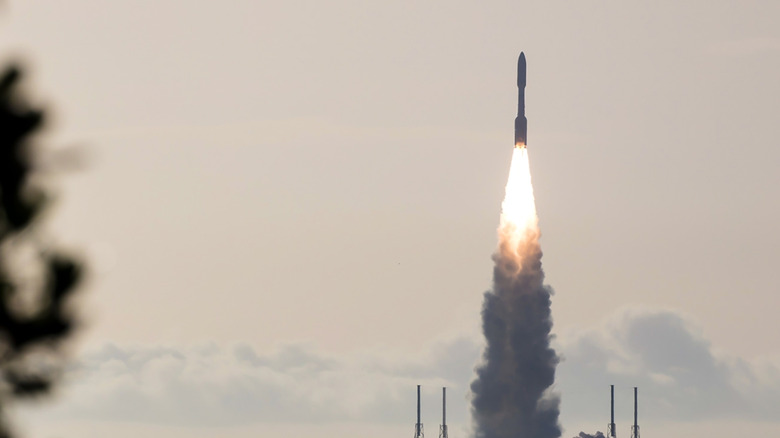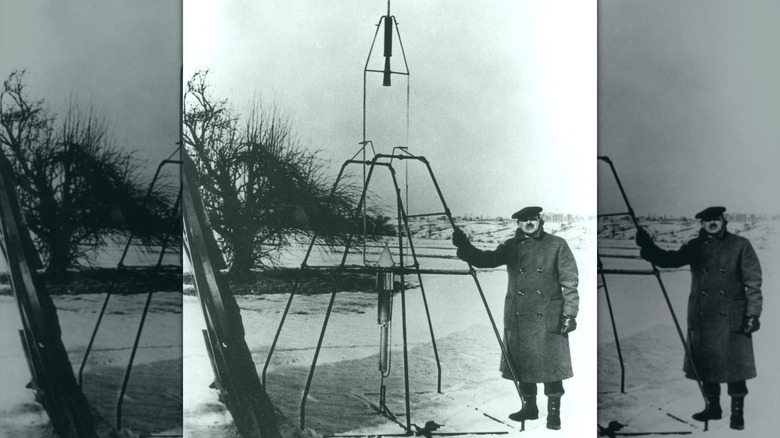Who Invented The Modern Rocket Engine?
When most people think of rockets, they likely imagine something like SpaceX's Raptor engine, or they might recall the Apollo 11 Saturn V rocket that took astronauts to the Moon. Rockets aren't something that many people have a chance to work with directly, but they're a ubiquitous technology that's been around far longer than you might think. The first military rocket was created in China in 1045 C.E. with so-called fire arrows. These were arrows outfitted with gunpowder-powered attachments that propelled them further than a person could otherwise fire them.
The Chinese also invented fireworks rockets, which many people enjoy blowing up on the Fourth of July or New Year's Eve. Rocket technology improved slowly until the 20th century, when scientists developed new means of propelling large objects through the sky. Modern rockets, which use a liquid or solid fuel, didn't come into being until a scientist named Dr. Robert H. Goddard developed and launched the first liquid-fueled rocket on March 16, 1926.
Goddard's work offered an exponential leap in rocket technology, as he hoped they could carry people into the upper atmosphere. His rockets didn't make it too far into the sky, with the highest altitude reached being just 9,000 feet. While not considered to be high today — some hobbyist model rockets soar to 2,500+ feet — it was an amazing achievement in the early 20th century. After Goddard, others developed rockets capable of carrying people and equipment into space, though he never lived to see his dream come to fruition.
Dr. Robert H. Goddard and the first modern rocket
There are many people who were involved in transforming rockets into the technology of today, but only one is called the "Father of Space Flight." Dr. Robert H. Goddard first developed the theories needed to power a rocket engine via liquid fuel. This took some time, and once he moved from theory to practical application, things changed. By 1914, he obtained patents for rockets that used liquid and solid fuels, and he received a $5,000 grant from the Smithsonian, an amount worth around $80,000 in 2025 dollars.
By 1927, that sum doubled, and in 1936, the Smithsonian published his findings in "Liquid Propellant Rocket Development." Goddard's innovations created a new means of launching rockets, guiding research and technology for decades. The rocket he launched in March 1926 was called "Nell," and it was fueled via a combination of liquid oxygen and gasoline. He launched it on a farm in Auburn, Massachusetts, and placed the engine on the top with the oxidizer and fuel tank situated below.
This is contrary to how rockets are designed today, but that hardly matters because the test worked. Goddard fired off his rocket, which soared 41 feet into the air during a flight time of just 2.5 seconds. It fell around 184 feet away from Goddard in a nearby cabbage field. With that, Goddard had achieved something nobody had before, and it was just the beginning. Goddard's work influenced the creation of the German V-2 rocket, the Saturn V, the rockets that carried the space shuttle into orbit, and so much more.

